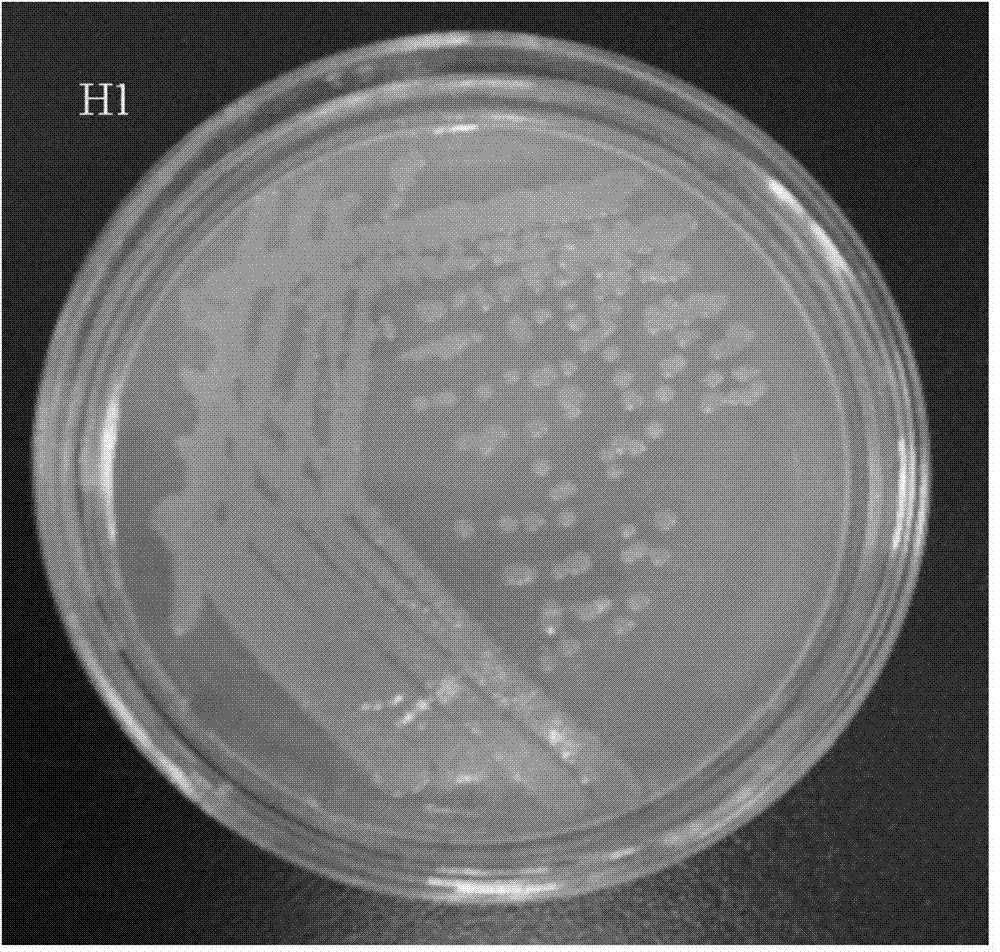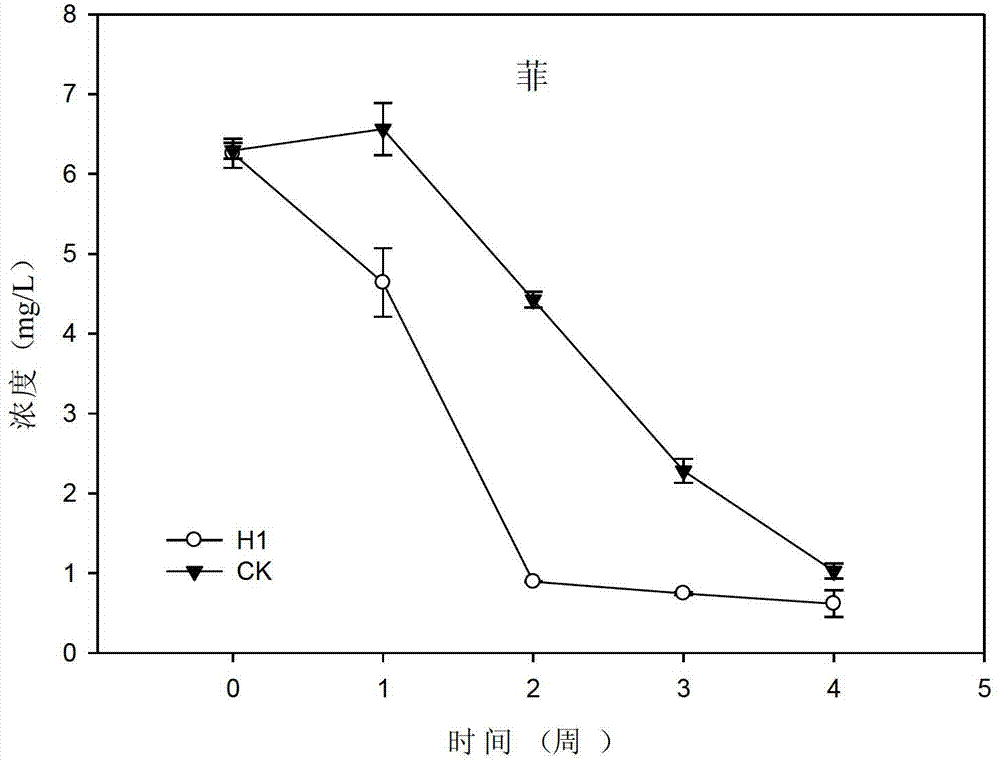Tistrella mobilis bacterial strain, polycyclic aromatic hydrocarbon degradation reagent, soil remediation reagent, and the application of Tistrella mobilis bacterial strain
A polycyclic aromatic hydrocarbon, Rhodospirillum technology, applied in the field of microorganisms to achieve the effect of expanding the scope and repairing soil
- Summary
- Abstract
- Description
- Claims
- Application Information
AI Technical Summary
Problems solved by technology
Method used
Image
Examples
Embodiment
[0031] 1. Isolation, Purification and Identification of Rhodospirillum H1
[0032] A. Culture medium preparation
[0033] 1. beef extract peptone medium: select the commonly used beef extract peptone medium at present;
[0034] ② Inorganic salt medium (MS): Each liter of the above inorganic salt medium (MS) contains K 2 HPO46.0g, KH 2 PO 4 5.5g, NH 4 NO 3 2.0g, Na 2 SO 4 2.0g, KCl2.0g, MgSO4 7H 2 O0.2g, 1.0mL trace metal salt solution, the balance is distilled water, wherein the pH of the above-mentioned inorganic salt medium (MS) is 7.0;
[0035] ③Inorganic salt medium containing PAHs: Prepare 1000 mg / L different PAHs solutions with dimethylformamide (N,N-Dimethylformamide, DMF), including PAHs solutions containing phenanthrene and PAHs solutions containing benzo[a]pyrene , the PAHs solution of pyrene and the PAHs solution of fluoranthene were quantitatively added to the sterilized inorganic salt medium, so that the final concentration was 100 mg / L.
[0036] B. Is...
PUM
 Login to View More
Login to View More Abstract
Description
Claims
Application Information
 Login to View More
Login to View More - R&D
- Intellectual Property
- Life Sciences
- Materials
- Tech Scout
- Unparalleled Data Quality
- Higher Quality Content
- 60% Fewer Hallucinations
Browse by: Latest US Patents, China's latest patents, Technical Efficacy Thesaurus, Application Domain, Technology Topic, Popular Technical Reports.
© 2025 PatSnap. All rights reserved.Legal|Privacy policy|Modern Slavery Act Transparency Statement|Sitemap|About US| Contact US: help@patsnap.com



